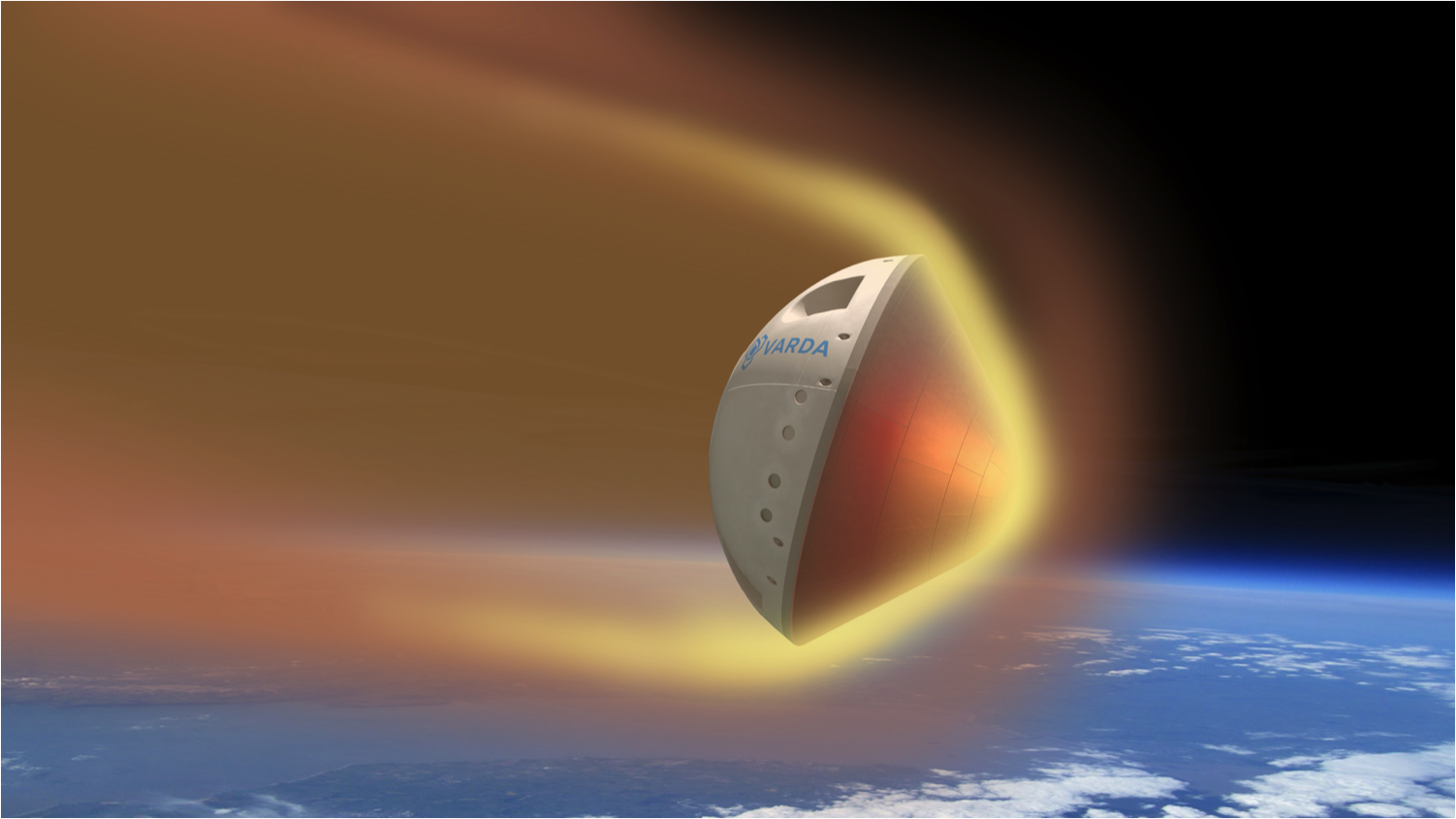
Update for Feb. 21: Varda Space Industries' first-ever in-space manufacturing mission W-1 will return to Earth today with its commercial payload, with a reentry planned over the U.S. military's Utah Test and Training Range (UTTR) or nearby Dugway Proving Ground. Late Tuesday, Varda reported that the W-1 capsule's Rocket Lab built Curie engine successfully executed the 2nd of 4 planned burns for the planned reentry.
A private company's first in-space manufacturing project is about to come back to Earth.
Last week, California-based Varda Space Industries got permission from the U.S. Federal Aviation Administration (FAA) to land the capsule from its W-1 mission in northern Utah.
If all goes according to plan, W-1's 3-foot-wide (0.9 meters) conical capsule will re-enter Earth's atmosphere on Wednesday (Feb. 21), Varda announced on Feb. 15. The craft will land under parachutes at one of two U.S. military sites west of Salt Lake City — the Utah Test and Training Range (UTTR) or the neighboring Dugway Proving Ground.
Related: In-space manufacturing company Varda plans to land its reentry capsules in Australia: report
Varda offers customers the chance to manufacture products such as pharmaceuticals in space, a unique environment with considerable advantages, according to the company.
"These benefits primarily stem from the lack of convection and sedimentation forces, as well as the ability to form more perfect structures due to the absence of gravitational stresses," Varda's website states. "These effects are 'locked' into the material, typically through material crystallization, before being brought back to Earth."
Get the Space.com Newsletter
Breaking space news, the latest updates on rocket launches, skywatching events and more!
These in-orbit reactions occur aboard the company's W-series capsules, which are designed to survive the fiery trip through Earth's atmosphere at mission's end.
Varda's first capsule launched in June 2023, as one of the many payloads on SpaceX's Transporter-8 rideshare mission. While in orbit, the W-1 capsule has been growing crystals of Ritonavir, an antiviral drug used to treat HIV and hepatitis C.
Varda originally planned to bring the capsule and its precious cargo home after a month or two but had difficulty securing reentry approval from the FAA and the U.S. military. That permission finally came last week.
The Varda capsule is integrated into a Rocket Lab Photon satellite, which provides power, propulsion, navigation, communications and other vital services. The Photon will hit Earth's atmosphere on Feb. 21 as well, but most of it will burn up on the way down.
The W-1 landing will mark the second time in less than five months that a spacecraft has touched down in northern Utah. On Sept. 23, 2023, the return capsule of NASA's asteroid-sampling OSIRIS-REx mission landed at the UTTR.
But the area won't host all Varda touchdowns, if all goes according to plan; last fall, the company inked a deal to bring some capsules down in South Australia.
Join our Space Forums to keep talking space on the latest missions, night sky and more! And if you have a news tip, correction or comment, let us know at: community@space.com.

Michael Wall is a Senior Space Writer with Space.com and joined the team in 2010. He primarily covers exoplanets, spaceflight and military space, but has been known to dabble in the space art beat. His book about the search for alien life, "Out There," was published on Nov. 13, 2018. Before becoming a science writer, Michael worked as a herpetologist and wildlife biologist. He has a Ph.D. in evolutionary biology from the University of Sydney, Australia, a bachelor's degree from the University of Arizona, and a graduate certificate in science writing from the University of California, Santa Cruz. To find out what his latest project is, you can follow Michael on Twitter.
-
Classical Motion This is interesting work. Not only canceling convection and gravity, for alloys, and other materials, but small currents might align these structures for improved properties not attained here on earth. This might allow more heat resistant materials. For faster velocities. And of course a variety of other wanted properties. It's certainly worth some investment in.Reply









